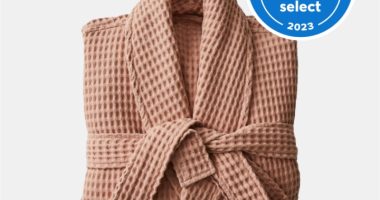
Tim Min once drove BMWs. He considered buying a Tesla.
Instead Mr. Min, the 33-year-old owner of a Beijing cosmetics start-up, bought an electric car made by a Chinese Tesla rival, Nio. He likes Nio’s interiors and voice control features better.
He also considers himself a patriot. “I have a very strong inclination toward Chinese brands and very strong patriotic emotions,” he said. “I used to love Nike, too. Now I don’t see any reason for that. If there’s a good Chinese brand to replace Nike, I’ll be very happy to.”
Western brands like H&M, Nike and Adidas have come under pressure in China for refusing to use cotton produced in the Xinjiang region, where the Chinese government has waged a broad campaign of repression against ethnic minorities. Shoppers vowed to boycott the brands. Celebrities dropped their endorsement deals.
But foreign brands also face increasing pressure from a new breed of Chinese competitors making high-quality products and selling them through savvy marketing to an increasingly patriotic group of young people. There’s a term for it: “guochao,” or Chinese fad.
HeyTea, a $2 billion milk tea start-up with 700 stores, wants to replace Starbucks. Yuanqisenlin, a four-year-old low-sugar drink company valued at $6 billion, wants to become China’s Coca-Cola. Ubras, a five-year-old company, wants to supplant Victoria’s Secret with the most non-Victoria’s Secret of products: unwired, sporty bras that emphasize comfort.
The anger over Xinjiang cotton has given these Chinese brands another chance to win over consumers. As celebrities cut their ties to foreign brands, Li-Ning, a Chinese sportswear giant, announced that Xiao Zhan, a boy band member, would become its new global ambassador. Within 20 minutes, almost everything that Mr. Xiao wore on a Li-Ning advertisement had sold out online. A hashtag about the campaign was viewed more than one billion times.
China is undergoing a consumer brand revolution. Its young generation is more nationalistic and actively looking for brands that can align with that confidently Chinese identity. Entrepreneurs are rushing to build up names and products that resonate. Investors are turning their attention to these start-ups amid dropping returns from technology and media ventures.
When patriotism becomes a selling point, Western brands are put at a competitive disadvantage, especially in a country that increasingly requires global companies to toe the same political lines that Chinese firms must.
China’s consumer protests are “a historic turning point and will have lasting impact on the Chinese consumers in the long run,” Mr. Min said. “The Chinese consumers don’t want to eat the same crap foreign brands have been feeding them. It’s essential that foreign brands respect Chinese consumers as much as the Chinese brands do.”
Foreign brands are far from done in China. Its drivers helped power a jump in Tesla deliveries. IPhones remain immensely popular. Campaigns against foreign names have come and gone, and local brands that emphasize politics too much risk unwanted attention if the political winds shift quickly.
Still, interest in local brands marks a significant shift. Post-Mao, the country made few consumer products. The first televisions that most families owned in the 1980s were from Japan. Pierre Cardin, the French designer, reintroduced fashion with his first show in Beijing in 1979, bringing color and flair to a nation that during the Cultural Revolution wore blue and gray.
Chinese people born in the 1970s or earlier remember their first sip of Coco-Cola and their first bite of a Big Mac. We watched films from Hollywood, Japan and Hong Kong as much for the wardrobes and makeup as the plot. We rushed to buy Head & Shoulders shampoo because its Chinese name, Haifeisi, means “sea flying hair.”
Today in Business
April 5, 2021, 4:00 p.m. ET
“We’ve gone through the European and American fad, the Japanese and Korean fad, the American streetwear fad, even the Hong Kong and Taiwan fad,” said Xun Shaohua, who founded a Shanghai sportswear company that competes with Vans and Converse.
Now could be the time for the China fad. Chinese companies are making better products. China’s Generation Z, born between 1995 and 2009, doesn’t have the same attachment to foreign names.
Even People’s Daily, the traditionally staid Communist Party official newspaper, is getting into branding. It started a streetwear collection with Li-Ning in 2019. That same year, it issued a report with Baidu, the Chinese search company, called “Guochao Pride Big Data.” They found that when people in China searched for brands, more than two-thirds were looking for domestic names, up from only about one-third 10 years earlier.
As with so much in China, it can be hard to tell how much of the guochao movement involves politics. Building up homemade brands fits snugly with the Communist Party’s desire to make the country more self-reliant. Officials also want Chinese people to shop more: Household consumption makes up only about 40 percent of China’s economic output, much less than it does in the United States and Europe.
Patriotism aside, entrepreneurs argue that their ventures rest on a solid business foundation. Similar trends happened in Japan and South Korea, both now home to strong brands. Local players better know the abilities of the country’s supply chains and how to use social media.
Mr. Xun’s sports brand has half a million followers on Alibaba’s Taobao marketplace and sells at the same prices as Vans and Converse, or even slightly higher. He said his brand competed by making shoes that fit Chinese feet better and offering colors favored locally, such as mint green and fuchsia. He sells exclusively online and teams up with Chinese and foreign brands and personalities, including Pokeman and Hello Kitty. At 37, he’s the only person in his company who was born before 1990.
The guochao fad has also reinvigorated older Chinese brands, like Li-Ning. For many years, sophisticated urbanites considered the brand, created by a former world champion gymnast of the same name, ugly and cheap. Its signature red-and-yellow color combination, after the Chinese flag, was mockingly called “eggs fried with tomato,” an everyday Chinese dish. Li-Ning was losing money. Its shares were on a losing streak.
Then the company introduced a collection at New York Fashion Week in early 2018. Its edgy look, combined with bold Chinese characters and embroidery, created buzz back home. Its shares have risen nearly ninefold since then. Now Li-Ning’s high-end collections sell at $100 to $150 on average, on a par with those of Adidas.
As ambitious as these businesspeople are, almost everyone I spoke to admitted that the Chinese brands still couldn’t compete with megabrands such as Coca-Cola and Nike.
Alex Xie, a marketing consultant who works with companies in China, used the sportswear industry as an example. Nike holds a yearslong lead over Chinese brands in research and development. It enjoys a deep network of relationships in the sports world. It works closely with athletes to develop better shoes, sponsors many events and teams, including China’s national soccer, basketball, and track and field teams.
“It simply has a much stickier relationship with its customers than any Chinese brand,” he said.
But for these Western megabrands, the Xinjiang cotton dispute is a big challenge that could help their Chinese competitors. While previous outrage against Western brands such as the National Basketball Association and Dolce & Gabbana passed pretty quickly, this bout could linger, many people said.
“In the past, some Western brands didn’t understand or failed to respect the Chinese culture mostly because of lack of understanding,” Mr. Xun said. “This time it’s a political issue. They have violated our political sensitivities.”
Then, like any savvy Chinese entrepreneur who knows which topics are sensitive, he asked, “Could we not talk about politics?”
Source: | This article originally belongs to Nytimes.com









